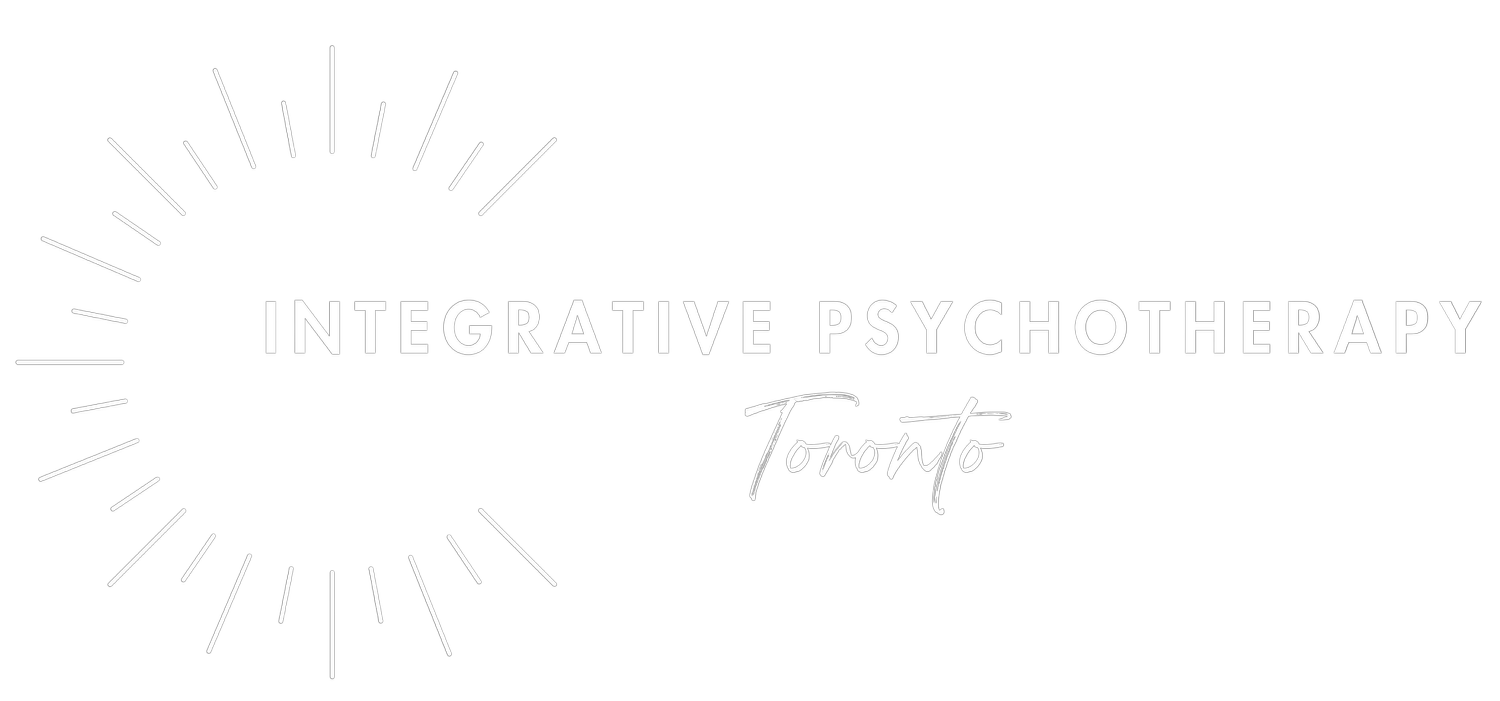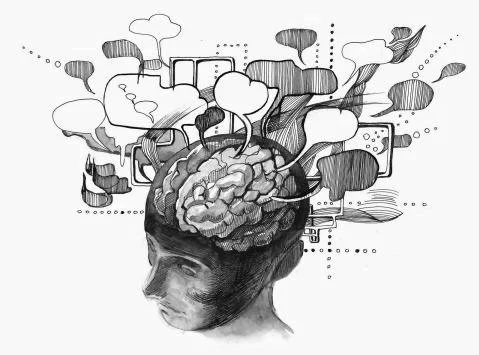Why “Shadow Work” needs a rebrand
Key points:
This is the blog version of my video Why "Shadow Work" Needs a Rebrand. If you’re more of a tl;dr kind of person, you may prefer the video.
The “Shadow Self” is the term Carl Jung used to describe part of ourselves that we keep hidden, from the world, and largely from ourselves. “Shadow word,” in Jung’s conception, was about bringing the Shadow Self into the light - making the darkness conscious.
I hate the term “Shadow Self” because of the notions that it conjures up - something that's dark and bad and ominous, when in reality, there are no bad parts, and is something’s happening, it’s happening for a reason. So I suggest a rebrand.
The Conversation: shadow self
Today’s topic stemmed out of a conversation with a client who was really frustrated with himself. He was talking about a situation that had happened where he’d acted in a way that he really didn’t like and he started talking about how much he hated this part of himself. He described it as this bad, dark, disgusting part, and then he paused and asked “is that my shadow side?” which led us to chatting about the “Shadow Self,” “Shadow Work” and the whole Shadow Realm.
What is Shadow Work?
The idea of a Shadow Self came from Carl Jung, who was a brilliant psychiatrist in the early 1900s. Jung was a protege of Freud, and his sense of the Shadow Self was greatly influenced by Freud’s ideas of the Ego and the Id.
Building on Freud’s ideas, Jung described there being two main aspects to our personality; the “Ideal Self” and the Shadow Self. I’m putting air quotes around the “Ideal Self,” because as we’ll see, the “Ideal Self” has a crap ton of baggage. The “Ideal Self” is not our best self or our highest self, or even our ideal, it’s a representation of what society idealizes.
The ideal self is what we show the world. It’s the part of ourselves that we usually identify with, that we often give the designation “I.” The Ideal Self lives in the conscious realm. The Shadow Self is what we’ve learned to hide from the world and largely from ourselves, too. The Shadow Self has often been repressed and largely lives in the unconscious realm. To the extent that we are aware of it or get glimpses of it, the Ideal Self usually looks upon the Shadow Self with shame, disgust and contempt.
Shadow Work is about bringing the Shadow Self into the light, as it were. By making the darkness conscious, as Jung famously said.
Now, there’s a lot in that still holds, even a century later. I believe wholeheartedly in the the idea that we repress and hide parts of ourselves, and that there is great value in healing and reclaiming those parts. But I hate the term Shadow Work.
Because
The term originates from Freud’s conception of the Id, which was this dark, sordid part of our personality that needed to be over ridden, and without getting on too much of a high horse with Freud, a lot has changed about our understanding of the mind since then, and
Even separate from Freud, the term “shadow” too easily associates to ideas of something dark and ominous, something bad.
And there’s such an irony in that, because thinking about parts of ourselves as dark and ominous and bad is what led them to being repressed in the first place.
So it’s unhelpful, but more than that, it’s also untrue. It is untrue that there are dark, bad parts of ourselves.
No Bad Parts
Which leads us to the number one maxim for working with parts: There are no bad parts. Nature doesn’t do anything in vain. Everything that exists in us, exists for a reason. Parts of us may not like it, but that doesn’t make it bad.
Ultimately, there are only 2 types of parts. There are
Unwounded parts
Wounded parts
Wounded parts have been injured, and often, in response, have changed. The same way tissue may change in response to injury - it may thicken and form scars or calluses - parts of us may change in response to injury - they may take on different roles or behaviours in order to adapt, to help the system survive the environment it’s in.
So there are no bad parts.
Which brings us to the second maxim of working with parts: If it’s happening, it’s happening for a reason. It serves a purpose. Our job is to understand that purpose. And to the extent that that purpose is protecting a wound - which it almost always is - to heal that wound.
The Hater & The Hated
If I return to my client, there were a few parts showing up in what he was describing. And since psychological phenomenon can be so abstract, I often use props to make it a bit more concrete.
So, there was the part that was hated (the one that had “behaved badly” and he thought was his shadow) and the part that hated the one who had behaved badly (the one who was calling the other one bad, dark and disgusting).
Since what was most present in session was how angry he was with himself - the hating part - we started there. And since the number one maxim of parts work is “there are no bad parts” - so the Hater isn’t bad - and the number two maxim of parts work is “if it’s happening, it’s happening for a reason” - so the Hater is hating for a reason - we started to be curious about what the reason would be.
As we got to know the Hater better, some old memories came up that related to how other people had treated the “badly behaved” part, and we started to learn a bit about how the Hater learned to hate. As we spent some time getting to know the Hater and understanding it’s origin story, it became pretty clear that Hater’s job, his purpose, was to rip the Hated one to shreds, to just eviscerate it, in an attempt to get rid of it.
Now again, there are no bad parts, so the Hater isn’t bad, and if it’s happening, it’s happening for a reason, so there must be something pretty important about getting rid of the Hated one if the Hater is going to such extreme measures. So I asked the Hater what it was worried would happen if it didn’t get rid of the Hated one. And almost immediately, “I’ll never be loved.”
And I said, “Well, shit. If those are the stakes, if that’s what’s on the line here, no wonder you’re doing everything you can to get rid of him.”
It’s happening for a reason. And a freaking good reason. The need to be loved, to be accepted, to belong, is one of our most fundamental needs.
On Maslow’s Hierarchy of Needs, if that need isn’t met, you are below the emotional poverty line. “So no wonder you’re doing everything you can to quash anything that might compromise the ability to get that need met.” That makes sense. It’s happening for a reason.
Now, do I think the Hater is right? Do I think he’ll never be loved if he doesn’t get rid of parts of himself? No. But that’s the wound. That’s what the Hater learned from the environment he grew up in, and how he had to adapt.
And if we can heal that wound… Well, I don’t know if the Hater’s natural state is heart eyes, we haven’t gotten that far yet, but he’ll be able to return to his natural state.
The Shadow vs. In The Shadows
So, as I’m hoping you can see, it’s a lot more complicated than an “Ideal Self” and “Shadow Self.” The Hater had his own “shadow,” an unconscious wound he was carrying that shaped how he shows up in the world. And of course there’s still the part who was getting a lot of shade thrown at it, who undoubtably carries his own wounds and who we’ll be returning to in later sessions.
If it was up to me, we would get rid of the term Shadow Self completely. There are no “Shadow” parts. There are parts that have been made to live in the shadows, not because they were dark or bad, but because we had experiences where they weren’t welcome or wanted. And so we exiled them so that we could still be welcome, so we could belong. So we weren’t below the emotional poverty line.
And a big part of healing is reclaiming those parts.
One of my all time favourite quotes is from Stephen Levine, an incredible Buddhist teacher, who said “If there is a single definition of healing, it is to touch with mercy and awareness those pains from which we have withdrawn in judgement and dismay.”
It is that withdrawing in judgment and dismay that leaves parts in the shadows, and it’s in touching them with mercy and awareness that we reclaim them, and that we heal.
So, that’s my rant on why Shadow Work needs a rebrand. Which, by the way, it’s gotten, in the form of Internal Family Systems.
Looking for More?
If you’re interested in learning more about therapy, we have lots of information to geek out on! You might enjoy:







